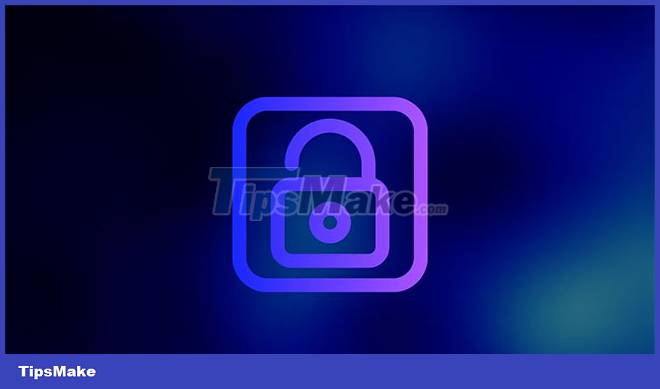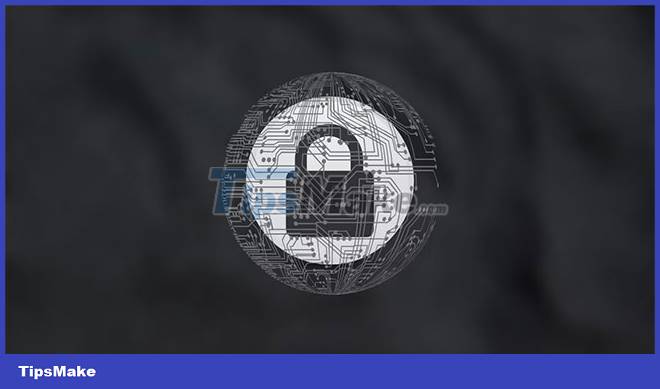What is the difference between password locking and encryption?
But what is the best and easiest way to secure personal information, such as files that you don't want anyone to access? Surely you will immediately think of password lock and encryption. So what is the difference between these two methods?
What is password lock?

Password locking refers to the process of protecting data with a sequence of symbols. This is a simple yet effective access control technique that we all use every day with the goal of protecting our security and privacy.
Password protection can be used on almost any device or program, and it has evolved significantly over the years. Today, most online platforms force you to use a complex password consisting of lowercase and uppercase letters, numbers, and special characters. Some require users to change their passwords periodically, while others require them to use two-factor or multi-factor authentication.
Naturally, data stored on the device can also be password protected. For example, you may have protected your phone with pattern lock, PIN or biometric authentication - this could be considered a form of password lock. Similarly, you most likely have also protected your Windows computer with a password.
Of course, it is also possible to protect individual files and folders with a password. You can do this easily on almost any smartphone, whether you're using Android or an iPhone. Some apps also allow PIN, pattern, or biometric protection – for example, most apps related to online banking have this feature.
The process is slightly more complicated on computer devices. Newer versions of Windows don't have a built-in feature that allows one to lock a file or folder with a password, but this can be done very easily using free third-party software, such as WinRAR. All you need to do is right-click the file or folder you want to protect, select Send to > Compressed (zipped) folder from the drop-down menu, then set a password. It is also possible to password protect files and folders on macOS.
How encryption works

People often confuse password protection with encryption, and some even use the terms interchangeably. In fact, they are very different things, despite having some similarities.
Simply put, encryption is a method of encrypting data in a way that cannot be read by unauthorized parties. This is done using complex mathematical algorithms that scramble the data and ensure that only those with the right key can decrypt it. So if you encrypt a file or folder, only you can decrypt it. Even if someone hacks your computer, they will have no way of decrypting anything without access to the decryption key.
The real question is, can the data be decrypted without the key? In theory, even the strongest encryption protocols can be broken. In practice, this is very unlikely. It would take a supercomputer thousands of years to crack a protocol like AES-256 (unless someone discovers a major flaw in AES-256 or something similar).
Obviously, encryption is much more secure than password protection. If you deal with sensitive information on a daily basis, have legal or financial documents stored on your computer, or simply want to enhance your privacy and security, you should consider using encryption. chemical. This is not to say that locking with a password is useless; that's definitely a correct solution, but encryption is a much better option.
But are there any downsides to protecting data with encryption? If you have lost or forgotten your password, there are ways to recover it. But if you lose the encryption key, you'll be in real trouble. Your data will be lost forever as there is no way to decrypt it without the key.
Encrypt your data for safety!
Password protection has long been an integral security mechanism and will likely remain for many years to come. But encryption is definitely the best way to protect sensitive information, be it legal documents or just personal photos that you don't want others to see.
If you want to improve your security and privacy at little or no cost, you should definitely consider encrypting your data. And make sure you use Zero-knowledge encryption, as this is by far the most secure option.
You should read it
- Set password, password protect USB data safely
- Ways to set USB passwords for data protection
- How to hack Wifi password with Aircrack-Ng
- Discover the difference between symmetric and asymmetric encryption
- Set password to protect and encrypt documents in Office 2013
- How to encrypt files and folders with EFS on Windows 10
 What is WebRTC Leak? How to prevent?
What is WebRTC Leak? How to prevent? How to turn off BitLocker on Windows 11, turn off hard drive encryption
How to turn off BitLocker on Windows 11, turn off hard drive encryption Fix Windows Defender is disabled on Windows 10, 8.1, 8
Fix Windows Defender is disabled on Windows 10, 8.1, 8 Instructions to remove WannaCry Ransomware from your computer
Instructions to remove WannaCry Ransomware from your computer 2 effective and free ways to check WannaCry
2 effective and free ways to check WannaCry List of file names, HASH SHA-256 codes containing WannaCry malware
List of file names, HASH SHA-256 codes containing WannaCry malware